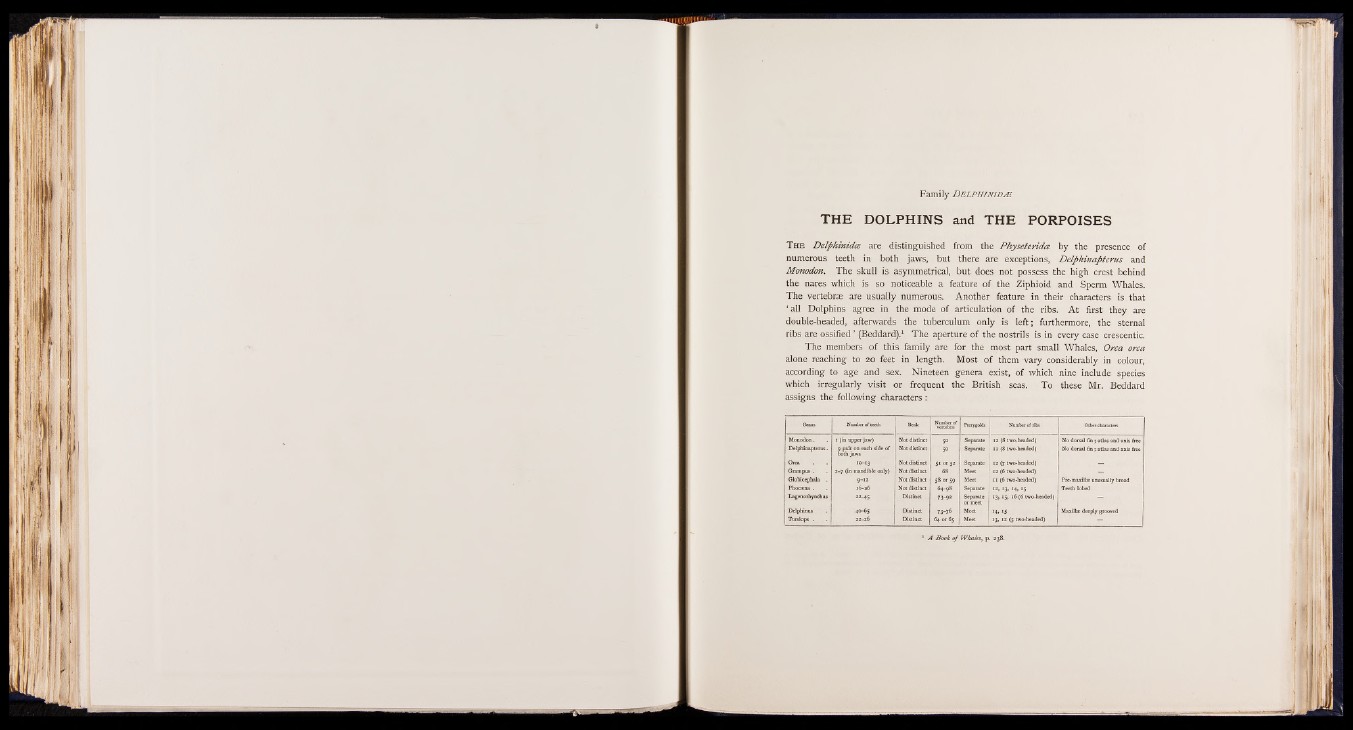
Family DBLPH INIDÆ
T H E D O L P H IN S and T H E P O R P O IS E S
T h e Delfthinidce are distinguished from the Physeteridce by the presence of
numerous teeth in both jaws, but there are exceptions, Delfthinaftterus and
Monodon. The skull is asymmetrical, but does not possess the high crest behind
the nares which is so noticeable a feature of the Ziphioid and Sperm Whales.
The vertebras are usually numerous. Another feature in their characters is that
‘ all Dolphins agree in the mode of articulation of the ribs. At first they are
double-headed, afterwards the tuberculum only is left; furthermore, the sternal
ribs are ossified ’ (Beddard).1 The aperture of the nostrils is in every case crescentic.
The members of this family are for the most part small Whales, Orca orca
alone reaching to 20 feet in length. Most of them vary considerably in colour,
according to age and sex. Nineteen genera exist, of which nine include species
which irregularly visit or frequent the British seas. To these Mr. Beddard
assigns the following characters:
Monodon.
Delphinapterus
Orca
Globicephala
Phocæna .
Lagenorhynchus
Delphinus
Tursiops .
I (in upper jaw)
9 pair on each side of
10-13
2-7 (in mandible only)
Not distinct
Not distinct
Not distinct
Not distinct
Distinct
Distinct
58 or 59
64-98
73-9*
Separate j o-headed)
j 12 (6 two-headed)
11 (6 two-headed)
j i*> *3> «4» «5
I I3t IS> (6 two-headed)
Maxillæ deeply grooved
1 A Book o f Whales, p. 238.